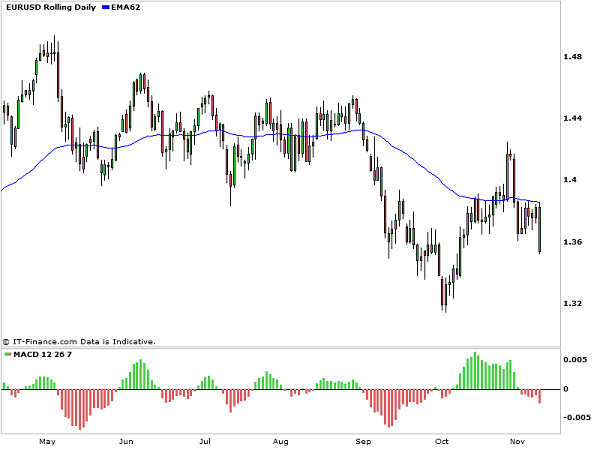
Even after today’s announcement of Silvio Berlusconi’s resignation, Euro markets moved considerable lower. This indicates that the market is still highly cautious of Europe’s precarious position and risk aversion still exists on a large scale. The higher yielding currencies made a considerable move lower and those positively correlated to the EUR/USD such as the AUD/USD took the majority of the markets pessimism.
The Euro was always going to be under pressure whilst the Italian PM, Silvio Berlusconi, remained as Italy’s leading political figurehead. Markets reacted with the speculation of his resignation fairly indifferently during Wednesday’s Asian trading session, but fell heavily back when news emerged that Italy’s bond yield had hit the 7% mark. This level is normally the threshold, making loans unsustainable and triggering the self-fulfilling prophecy that Italy may need to request a bail-out package in the coming weeks. Although the bond yield can fluctuate, the 7% mark will prevent the government from both borrowing finance, as very few institutions’ will risk the provision of capital, and of paying back such a high level of interest on these bonds.
The currency most closely correlate to the EUR/USD is the AUD/USD, and today it too fell sharply on the destabilisation of the Euro. Despite being a currency operating outside of the EU, its [intlink id=”2035″ type=”post”]correlation [/intlink]comes most strongly though it’s pairing with the USD and the fact that it is considered a high-yielding currency. The interest rates have been very high over the past 6 months but these are likely to be brought back down 0.25 cents in early December; making the currency less popular as an investment. There is positive news for the Aussie dollar, which may potentially lift the currency away from its Euro correlation in the near-term, and this is the announcement of better than expected results. Investors are waiting to see if the AUD/USD can improve on the 10’000 extra jobs estimated for Thursday’s news release. A figure significantly higher than this may allow it to lower its correlation to the EUR although the USD looks to be set to gain over the coming days if the market continues to move away from riskier assets.
The Euro is currently looking very weak having broken down out of the [intlink id=”2056″ type=”post”]wedge pattern[/intlink] that it had been forming on the daily and hourly charts. Wednesday’s candlestick chart shows a strong, bearish outside bar which often signals a significant move lower and a continuation of the Euro’s current downtrend. The fundamentals at the moment support this view, with Italy now proving that the financial crisis is perhaps more contagious and less easy to prevent than first envisaged. Investors are looking to the safety of the USD yet again in order to reduce their exposure to the riskier, higher yielding assets. The USD may begin to look over-bought over the coming days but the uncertainty of the European debt crisis should allow it to maintain a strong position relative to both the EUR and AUD.
Comments (No)